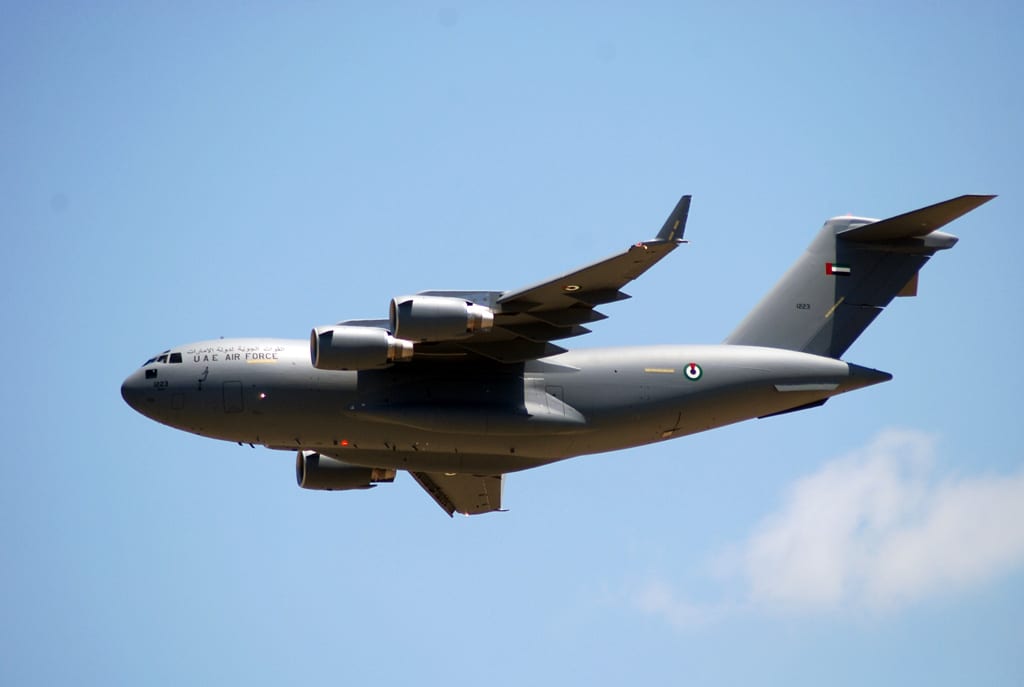The U.S. State Department has made a determination approving a possible Foreign Military Sale to the Government of the United Arab Emirates of C-17 Globemaster III Sustainment and related equipment for an estimated cost of $980.4 million. The Government of the United Arab Emirates (UAE) has requested to buy follow-on sustainment and support of C-17 fleet to include aircraft hardware and software modifications and support; Joint Mission Planning System (JMPS) software; classified software support for Electronic Warfare (EW) self-protection; engine support equipment; participation in the C-17 Virtual Fleet for Total System Sustainment (TSS) contractor logistics support and Material Improvement Program (MIP).
The McDonnell Douglas/Boeing C-17 Globemaster III is a large military transport aircraft that was developed for the United States Air Force (USAF) from the 1980s to the early 1990s by McDonnell Douglas. The C-17 commonly performs tactical and strategic airlift missions, transporting troops and cargo throughout the world; additional roles include medical evacuation and airdrop duties. The transport is in service with the USAF along with air arms of India, the United Kingdom, Australia, Canada, Qatar, the United Arab Emirates, Kuwait, and the Europe-based multilateral organization Heavy Airlift Wing. The type played a key logistical role during both Operation Enduring Freedom in Afghanistan and Operation Iraqi Freedom in Iraq.
The C-17 Globemaster III is a strategic transport aircraft, able to airlift cargo close to a battle area. The size and weight of U.S. mechanized firepower and equipment have grown in recent decades from increased air mobility requirements, particularly for large or heavy non-palletized outsize cargo. It has a length of 174 feet (53 m) and a wingspan of 169 feet 10 inches (51.77 m),[54] and uses about 8% composite materials, mostly in secondary structure and control surfaces. The C-17 is powered by four Pratt & Whitney F117-PW-100 turbofan engines, which are based on the commercial Pratt & Whitney PW2040 used on the Boeing 757. Each engine is rated at 40,400 lbf (180 kN) of thrust. The cargo compartment is 88 feet (27 m) long by 18 feet (5.5 m) wide by 12 feet 4 inches (3.76 m) high.
In February 2009, the United Arab Emirates Air Force agreed to buy four C-17s. In January 2010, a contract was signed for six C-17s. Deliveries will quickly ramp up under the UAE’s January 2010 production order for the C-17, with the second aircraft already having been completed and painted. The first four had been accepted by the end of that year, with the remaining two to follow in 2012, according to Boeing. The company will provide in-service support for the fleet via its Globemaster III Sustainment Partnership programme. The UAE will follow regional ally Qatar in introducing the C-17 to operational use. It had also planned to buy 12 Lockheed Martin C-130J tactical transports as part of its airlift expansion, but has indefinitely postponed the acquisition to focus on other equipment priorities.












